An occasional series walking the Lea Valley. Very occasional as I am recovering from surgery, and this was my first attempt to go for a walk in two weeks. As it happens, the end of the Lea Valley is right next to where I live, so the basin was suitable site for my first hobble. It took me about half an hour to walk around the basin, but you’ll do it in ten minutes.
A small nature reserve at Blackwall is all that remains of one of Dockland’s many docks that once served goods from India, and later supported the D-Day invasions.
Two docks were built by the East India Company, with approvals starting in 1803, next to the existing Brunswick Yard, a ship building site already owned by the Company.
They converted the old Brunswick Yard into a large export dock, and what is today the site of office blocks became a large import dock. The bit that remains, the East India Dock Basin was merely the entrance to the Thames for these two might docks.
The Second World War had a tremendous impact on the docks. The Import Dock was drained for the construction of Mulberry floating harbours; the Export Dock suffered such severe bomb damage that it was never reopened and sold in 1946.
The Export Dock had an interesting second life though — in that it became a large power station in a style similar to Battersea and Bankside. It closed down in 1984 though and was demolished a few years later. Today the area is a housing estate.
The nearby East India DLR station was originally going to be called Brunswick Wharf when the line was planned, but the name changed at some point before the station opened.
The import dock was also filled in, and is today a cluster of office blocks, with a few small lakes in memory of its former grandeur. However, the Basin remains, and is today a wildlife refuge for sea birds.
One of the delights of the docklands area is the mix of old industrial, modern, and wild nature .There are few places where you can walk around a landscape that is still recognisably industrial, but has been in its own way reclaimed by nature. To wander (or in my case, hobble) through a wood and have lumps of restored ironwork seemingly randomly popping up out of the ground. In any other place, it’s be some sort of modern art, but here they are echoes of dock workers, of spices and exotic goods, of swearing and shouting, all long past.
The main audible sound today is the mournful cry of the gulls flying overhead looking for a discarded cold chip.
A few bird watching points are dotted around the edge of the basin, and signs for what to look out for.
The basin is still connected to the Thames via a lock gate, and it is tidal, as they’ve filled in the dock to become that rare sort of central London nature reserve, a tidal lagoon with a saltmarsh and mudflats.
Along the river, the remains of a long since sealed off pier still reach out into the river, reminding us of the industrial heritage of the site. I love these old bits of slowly eroding away industrial concrete and rusty steel. So much more real to see it simply kept safe, and then left alone. The birds probably prefer it, and I do, especially when the backdrop is that modern eyesore, the Millennium Dome.
At the moment, the area is quiet, but with a cluster of flats going up all over the place, it’s bound to be a bit busier in the future. There is talk of a visitor centre opening as well.
There are two gates into the basin, and they are locked at night, so the birds can get some sleep.

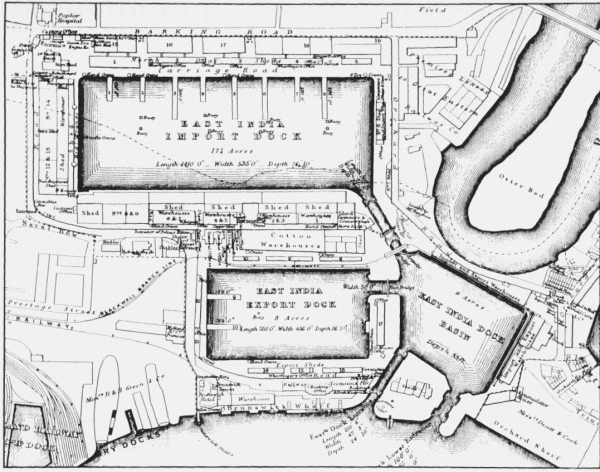
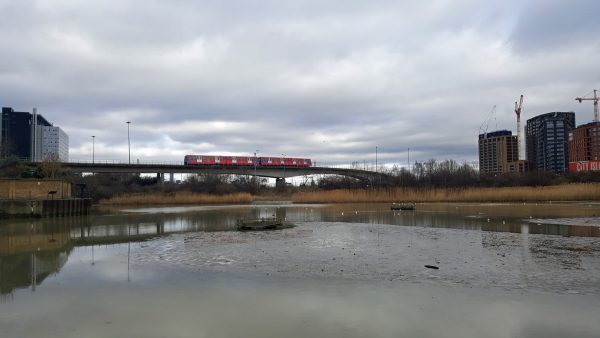
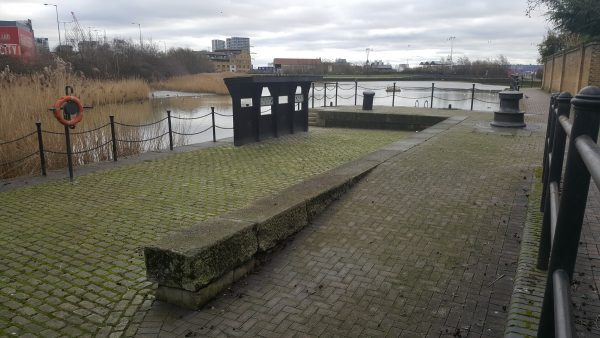
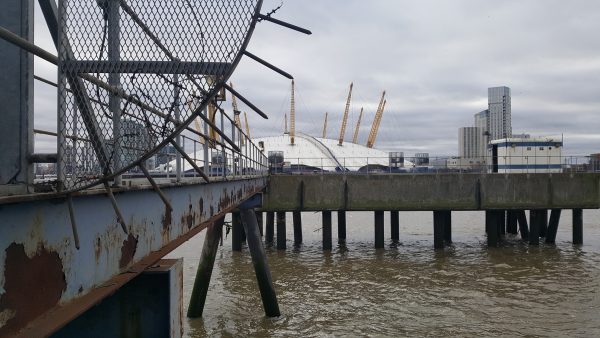
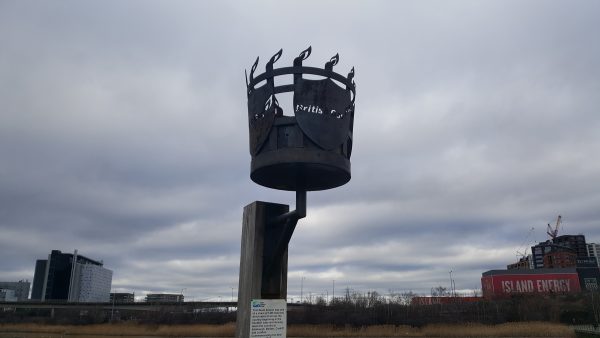
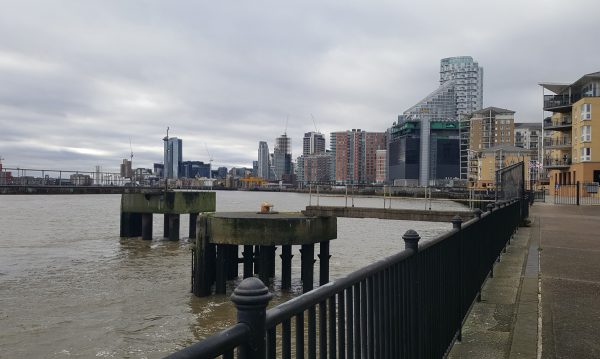
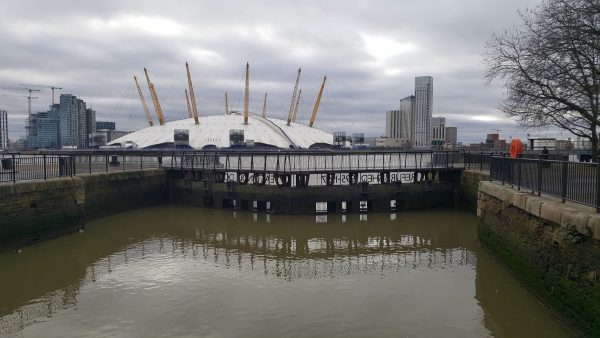
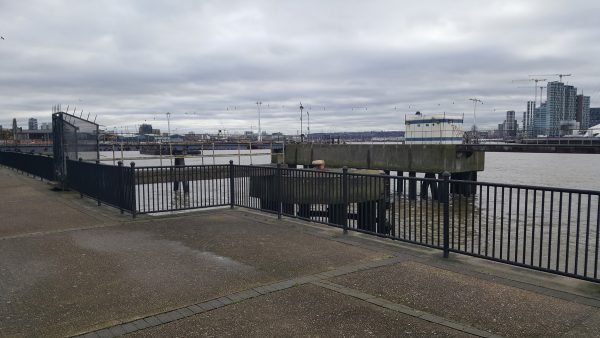
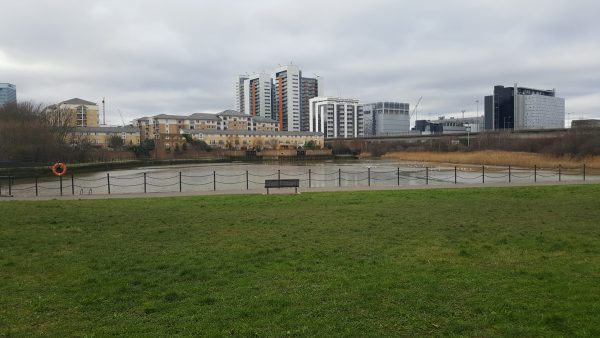
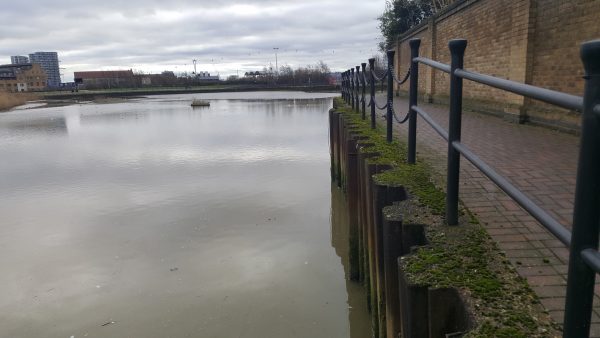
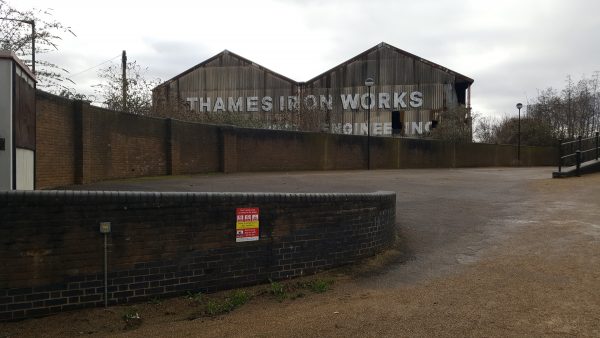






The whole area is an interesting mix of old industrial, modern offices and flats. We live in Woolwich so take the DLR, or our favourite, the Thames Clipper river bus – and frequently I cycle. It’s great. The Woolwich Ferry with boats – including the Ernest Bevin – dating from the 60s (my grandfather took me on one when I was very small and the boat was new). The Tate & Lyle factory. Small metal bashing workshops and wholesale stores. The magnificent Thames Barrier. The Millennium Mills that you recently wrote about. The awful Excel Centre, along with the maligned but rather wonderful Emirates cable car. The area is a tremendous slice of London history.
Thanks for sharing the story of the nature reserve. I shall cycle there soon.
All the best for your recuperation.
From looking at your map, and comparing it against current maps, I’d venture to say that the site of the old Import dock now also has a very interesting second life as the site of Telehouse, which is one of the principal hubs of the internet in the UK.
Thanks for an interesting article.